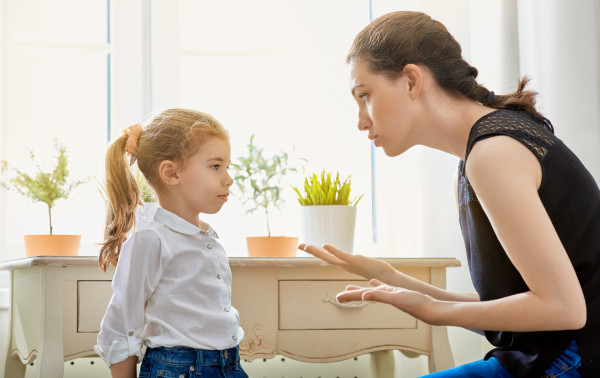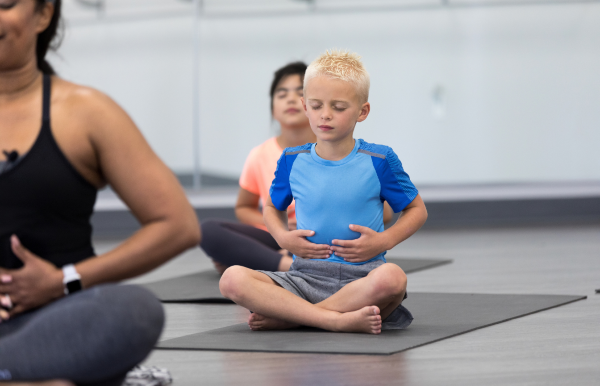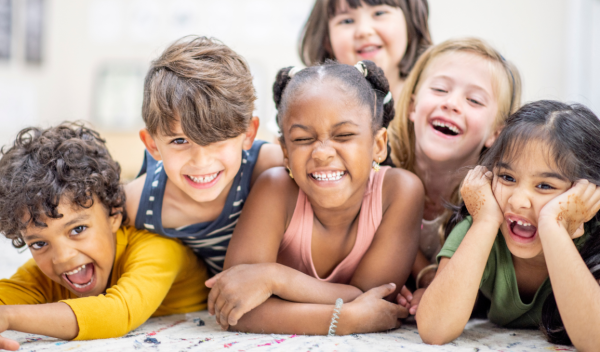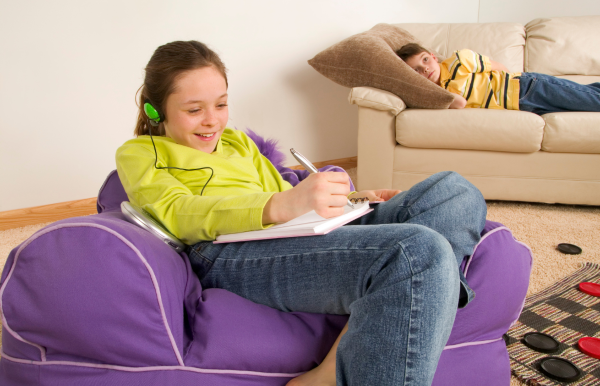Teaching Conflict Resolution for Kids with Lemonade Stands
Teaching children strategies for conflict resolution is essential to their growth and interpersonal connections. By learning these strategies, children can develop the necessary skills to navigate complex social situations, resolve disputes amicably, and build stronger relationships with their peers. Conflict resolution education not only helps children manage their emotions but also fosters a sense of empathy and understanding, which are crucial for their overall emotional and social development.
Incorporating conflict resolution lessons into everyday activities, such as group projects or lemonade stands, can provide practical, hands-on experience. These real-world applications help children see the value of resolving conflicts constructively and encourage them to apply these skills in different scenarios. By consistently practicing conflict resolution, children become more adept at managing disagreements, leading to more harmonious and productive interactions.
Key Takeaways
- Teaching conflict resolution skills promotes children’s emotional intelligence, helping them manage feelings and reducing bullying.
- Using ‘I’ statements and calming techniques empowers kids to express emotions constructively, leading to healthier communication.
- Encourage kids to develop problem-solving skills by fostering empathy through role-playing and collaborative projects, equipping them to handle conflicts independently.
Understanding Conflict Resolution Skills
Developing conflict resolution abilities is critical for the long-term prosperity of children. These skills empower kids to regulate their emotions, enhance communication capabilities, and cultivate nourishing relationships. As children learn how to resolve conflicts through discussion and cooperative efforts, they gain a richer comprehension of themselves as well as others—this promotes emotional intelligence while simultaneously lessening stress levels. Such abilities transcend mere avoidance of altercations. Instead, they promote unity within teams, facilitate the refinement of ideas and fortify bonds between friends.

Imagine a typical scenario where kids are engaged in a group activity, like running a lemonade stand. They might encounter disagreements about pricing, roles, or even the flavor of the lemonade.
These conflicts provide valuable opportunities for children to practice negotiation and problem-solving. By working through these issues together, they learn to listen to each other’s viewpoints, find compromises, and collaborate effectively.
This practical experience not only aids them in resolving the immediate conflict but also equips them with vital skills for future interactions, underscoring the significance of teamwork and mutual respect. Such activities help kids learn to express their feelings and consider different perspectives.
Proficiency in conflict resolution can drastically cut down on hostile behavior and instances of bullying among young ones. It arms them with strategies to address disagreements productively, transforming potential disturbances into teachable moments conducive to personal development. When adults exemplify healthy approaches to resolving conflicts successfully, they guide young people toward becoming individuals who are constructive community members that embody positivity and kindness.
Teaching Kids to Identify Emotions
Teaching children how to recognize and handle their emotions is essential for instilling conflict resolution skills. By becoming aware of their own feelings, kids are equipped to deal with conflict and disagreements in a way that prevents escalation. Fostering emotional intelligence through the ability to identify and express feelings assists kids in effectively maneuvering through conflicts.
Children can experience identifying emotions when running a lemonade stand. This classic activity provides a practical setting for kids to practice recognizing and expressing their feelings. From deciding roles to setting prices and handling of restocking lemonade stand supplies, these scenarios offer valuable lessons in understanding and articulating emotions.
For example, disagreements over who handles money or makes the lemonade can teach kids to communicate their feelings, listen, and find compromises. Customer feedback also fosters empathy and understanding.
Encouraging children to convey their emotions via healthy communication can be very effective. Engaging in a calm, respectful dialogue about one’s feelings helps avoid misunderstandings while establishing an environment filled with empathy.
Let’s explore various strategies that enable kids to clearly communicate their emotions without exacerbating any conflicts at hand.
Using "I" Statements
Employing ‘I’ statements is an effective method for dignified conversation. Rather than resorting to making accusations or indulging in name-calling, utilizing ‘I’ statements enables children to convey their feelings without pointing fingers at others. By expressing “I feel upset when my ideas are ignored,” the focus remains on the emotions of the speaker and facilitates a space for meaningful exchange.
By minimizing defensive responses, this technique prompts peers to pay attention and engage more receptively. When kids articulate their emotions with clarity and respect through ‘I’ statements, it cultivates a setting conducive to resolving conflicts efficiently.
Deep Breaths and Calming Techniques
Encouraging children to take deep breaths is a vital technique for helping them stabilize their emotions and gain clarity of thought before dealing with conflicts. Establishing a peaceful place where kids can compose themselves helps in this process.

In the journey toward emotional regulation, adults are instrumental by exemplifying tranquil behavior and offering visual cues like checklists or posters that remind children how to utilize calming strategies amidst disputes. Such measures not only assist kids in tackling conflicts more adeptly, but also promote an atmosphere conducive to managing emotions.
Encouraging Empathy and Perspective-Taking
Empathy, the ability to put oneself in another person's shoes, is fundamental for resolving conflicts. Teaching kids to understand different perspectives helps them navigate social interactions more effectively and fosters a sense of compassion. Recognizing and reflecting on others’ emotions helps children understand the impact of their actions and approach conflicts with kindness.
When children work together to run a lemonade stand, they must consider each other’s feelings and perspectives. For instance, if one child wants to set a higher price for the lemonade while another prefers a lower price to attract more customers, they must listen to each other’s reasoning and find a middle ground. This process helps them understand the importance of compromise and the impact of their decisions on their peers.
Additionally, dealing with customer feedback provides another layer of empathy-building. Children learn to understand and address the needs and preferences of their customers, which can sometimes conflict with their own desires. This teaches them to put themselves in others’ shoes and consider different viewpoints, fostering a deeper sense of empathy and understanding.
The collaborative nature of a lemonade stand requires kids to support each other through various tasks, such as creating a lemonade stand menu, handling money, and serving customers. This teamwork not only strengthens their bond but also enhances their ability to empathize with each other’s challenges and successes. By working together towards a common goal, children develop a sense of shared responsibility and mutual respect, which are crucial components of empathy.
Storytelling and role-playing are excellent methods to encourage empathy. Such activities let children explore various scenarios and grasp the importance of listening and perspective-taking during conflicts. Through these exercises, kids can develop the skills needed to become good friends and empathetic individuals.
Role Playing Different Scenarios
Engaging children in role-playing exercises is a powerful method to impart skills for conflict resolution. Kids get the opportunity to practice how they can resolve conflicts through simulated scenarios, which serves as a risk-free platform where kids can navigate different approaches for managing disagreements and recognize the impacts of their decisions.
When kids partake in these activities, especially those that mimic high-tension situations, it allows them to collectively come up with strategies and learn calming methods. Such practices do more than just improve their problem-solving capabilities. They also foster self-confidence and develop empathy within them.
Practical Conflict Resolution Strategies
Delving into the realm of practical conflict resolution strategies, we aim to equip kids with the tools necessary to handle conflict effectively and devise actionable solutions. These techniques encompass everything from identifying mutual interests to mastering the art of communication — all critical in settling disagreements and nurturing harmonious interactions.
These can be learned through the management of a lemonade stand. A lemonade stand offers a microcosm of real-world conflict scenarios and the resolution skills needed to navigate them. From getting a lemonade stand permit to deciding who will handle the money, children encounter various opportunities to practice conflict resolution.
They learn to communicate their ideas, listen to others, and find compromises, all while working towards a common goal. Additionally, the experience of dealing with customers, receiving feedback, and making adjustments based on that feedback further enhances their ability to handle disagreements and work collaboratively. This hands-on approach not only makes the learning process engaging and practical but also instills a sense of responsibility and teamwork in children.
By guiding children in developing problem-solving skills and adept communication, they become better prepared to face conflicts with a serene and reflective disposition. Such practices are pivotal in shaping how children deal with discord, ensuring that they approach challenging situations thoughtfully rather than reactively.
Finding Common Ground
Identifying shared interests and objectives is essential when children are working to resolve conflicts. This approach can alleviate tension and pave the way for cooperative problem-solving by focusing on what they have in common. Promoting active listening and empathy towards each other’s viewpoints often reveals areas of agreement.
For example, kids might explore which activities or goals they both find appealing. By centering on this common ground, a conflict may evolve into a chance for mutual understanding and collaboration.
Compromise and Negotiation
Negotiation and the ability to find middle ground are vital elements of resolving conflicts. When kids talk about their emotions and wants, they can come up with solutions that everyone involved finds acceptable. Clear expression of needs and attentive listening facilitated by strong communication skills is crucial for this process.

Promoting teamwork activities for kids and aiming for outcomes where all parties benefit strengthens children’s ability to tackle problems effectively while fostering more robust interpersonal connections. Through such encounters, children learn the significance of working together harmoniously and recognizing the necessity to discover equitable resolutions.
Apologizing Effectively
Instilling in kids the importance of an authentic apology is fundamental for resolving conflicts effectively. By distinguishing between heartfelt remorse and a hollow apology, we teach them to take responsibility for their actions. Such genuine contrition can repair bonds and exhibit empathy, aiding children to resolve disputes in a manner that promotes healthiness and respect.
Conflict Resolution Activities
Engaging in activities is a delightful and dynamic way to instill conflict resolution skills among children. Utilizing games such as Rock-Paper-Scissors can transform the learning of conflict resolution into a pleasurable event for kids. These kinds of activities encourage improved communication and comprehension, while allowing children to practice resolving conflicts in an environment that’s both lighthearted and devoid of pressure.
And when a child has a lemonade stand, it provides a great opportunity for conflict resolution. The various tasks and decisions involved in running a lemonade stand, such as setting prices, deciding who will handle the money, and choosing who will make the lemonade stand, naturally present scenarios where disagreements can arise.
These moments are prime opportunities for children to practice negotiation, compromise, and effective communication. By working through these conflicts, children not only learn to resolve the immediate issue but also develop essential life skills that will benefit them in future interactions. They learn methods to help kids respond effectively to disagreements, enhancing their conflict resolution abilities.
The experience of dealing with customer feedback and making adjustments based on that feedback further enhances their ability to handle disagreements and work collaboratively. This hands-on approach to conflict resolution makes the learning process engaging and practical, while simultaneously cultivating a more profound sense of collaboration and empathy.
Group Discussions and Storytelling
Using storytelling and group conversations, we can effectively teach children how to resolve conflicts. These methods enable kids to encounter situations in narratives that underscore the value of listening actively, demonstrating empathy, and seeking compromise. Such dialogues provide a nurturing setting where children are motivated to grasp diverse viewpoints while practicing empathetic responses.
These discussions are enriched by thought-provoking questions and prompts which aid children in dissecting conflict scenarios and crafting efficient resolutions. As they converse about their emotions and personal experiences with conflict, it allows them to refine their approach towards managing disagreements with greater consideration and respect.
Collaborative Projects
Working together on joint projects offers kids crucial chances to develop their conflict resolution abilities. Such collaborations demand good communication, the ability to work well with others, and a willingness to compromise, all of which aid in teaching children how to seek mutually beneficial outcomes and manage disputes positively.
When engaged in a collective task like constructing a lemonade stand or planning an event, children learn the importance of generating ideas collectively and striving for shared objectives. These activities strengthen problem-solving competencies while promoting teamwork and cultivating mutual appreciation among participants.
Helping Kids Resolve Conflicts Independently
It’s vital to support children in learning how to independently address conflicts as they mature. Providing them with strategies for conflict resolution aids in their ability to navigate the highs and lows of relationships while fostering emotional control. As kids practice these skills, they become adept at dealing with conflicts in a calm and reflective manner.
When kids are encouraged to brainstorm solutions on their own and seek common ground, it cultivates self-reliance and self-assurance. Such preparation is essential for children to effectively resolve conflicts during social engagements with other kids.
For instance, running a lemonade stand teaches kids valuable lessons in conflict resolution. They might face disagreements over naming the lemonade stand, roles, or even the location. By working through these issues, children learn to listen to each other’s viewpoints, find compromises, and collaborate effectively. These hands-on experiences not only resolve the immediate conflict but also equip them with essential skills for future interactions, fostering teamwork and mutual respect.
Mediation Guide
Teaching children how to resolve conflicts on their own is greatly facilitated by the use of a mediation guide. It offers a systematic method for problem-solving, enabling kids to express their feelings and requirements clearly. This resource can be applied both within educational settings and in home environments, underscoring its adaptability as an aid in conflict resolution.
The guidance may involve steps such as alternating speaking opportunities, articulating emotions through ‘I’ statements, and collaboratively generating possible resolutions. Adhering to these protocols allows children to manage disputes constructively and autonomously.
Creating a Safe Space
Establishing a secure environment dedicated to conflict resolution is crucial. By having a ‘calm corner’ at school or home, kids have an allotted spot where they can engage in relaxation exercises prior to addressing conflicts. Such spaces assist children in stress management and prepare them with a more lucid frame of mind for dealing with disputes.

It’s beneficial for parents and teachers to offer empathy listening ears to the emotions of the youngsters while also providing necessary direction. Setting clear limits within an encouraging atmosphere bolsters children’s ability to tackle disagreements both confidently and courteously, demonstrating that children react well when given this kind of support.
Final Thoughts on Conflict Resolution for Kids
In conclusion, teaching conflict resolution skills to children is an invaluable investment in their personal development and social interactions. By helping kids identify and manage their emotions, encouraging empathy, and providing practical strategies, we can equip them to handle conflicts constructively and independently. These skills will not only enhance their relationships, but also contribute to their overall well-being and success.
As we guide children through these lessons, let’s remember the lemonade stand – a simple yet powerful setting where kids can learn, grow, and thrive. Together, we can create a world where children approach conflicts with kindness, understanding, and confidence.
Frequently Asked Questions
Why are conflict resolution skills important for children?
Mastering conflict resolution skills is essential for children, enabling them to control their emotions, improve communication abilities, and foster beneficial relationships.
These skills equip them with the means to diminish aggression and promote collaborative efforts among peers, setting a foundation for a more promising future.
How can 'I' statements help in conflict resolution?
Employing ‘I’ statements helps to create a constructive environment by allowing you to express your emotions without pointing fingers at others, consequently diminishing defensive reactions and promoting candid dialogue.
Adopt this strategy for enhanced conflict resolution!
What are some calming techniques children can use before resolving conflicts?
Urging your child to engage in deep breathing, establish a peaceful space, or utilize visual cues can greatly assist in regulating their emotions prior to addressing conflicts.
Employing these strategies allows them to face disagreements with more clarity and tranquility.
How can role-playing help children learn conflict resolution?
Through role playing, children are afforded a secure environment to rehearse the intricacies of conflict resolution. This method fosters their capacity for empathy while simultaneously strengthening their problem-solving skills.
Seize this chance to guide them in acquiring essential competencies that will assist them throughout life when managing disagreements!
What is the purpose of a mediation guide in conflict resolution?
A mediation guide is essential for fostering effective communication and problem-solving, enabling individuals, especially children, to express their feelings and resolve conflicts positively and independently.
Embrace this tool to empower yourself and others in navigating challenges constructively!
back to blog
@LemonadeDayNational






